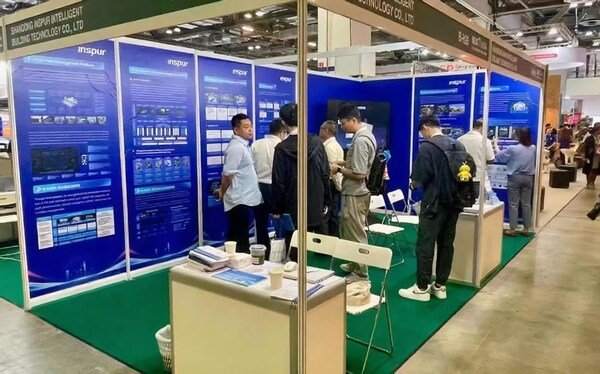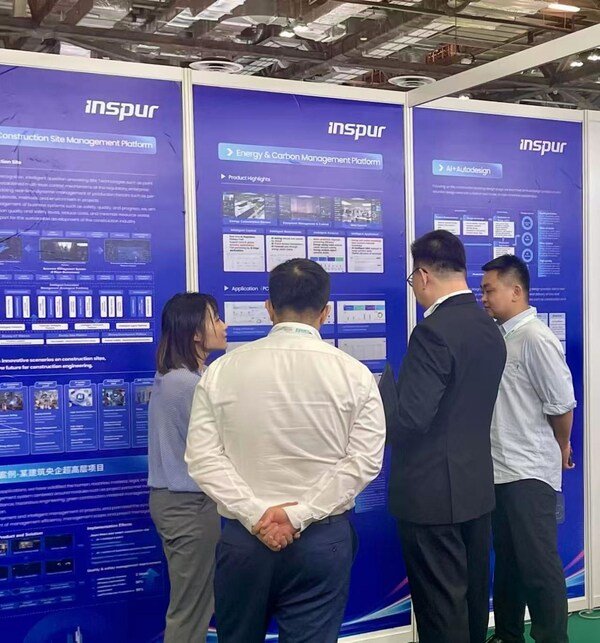Tools & Platforms
Billionaire Mark Cuban Says AI Gives Workers ‘Superpowers,’ but Crypto Is ‘Not Even Close’ to Its iPhone Moment

Mark Cuban has always been tech’s most pragmatic and outspoken billionaire. As an early internet entrepreneur, a prolific investor on Shark Tank, and the owner of the Dallas Mavericks, he’s seen multiple hype cycles come and go. He was an early advocate for crypto’s potential but has remained a sharp critic of its excesses.
Now, as the twin forces of artificial intelligence and cryptocurrency dominate the conversation, we asked Cuban to weigh in. In this exclusive Q&A, he explains why he thinks AI is on the verge of changing everything, why crypto is still waiting for its big moment, and what the future of work looks like in a world where technology gives “superpowers” to anyone willing to learn.
This conversation has been lightly formatted for clarity. All quotes appear exactly as Cuban gave them.
The Big Picture: AI vs. Crypto
Gizmodo: You’ve invested in both AI and crypto. Which one do you think will have the deeper impact on society, and which one will deliver more value to regular people?
Mark Cuban: AI. It’s not even close.
On AI: The Real Revolution
Gizmodo: On AI, how do you see the traditional office changing in the next five years, with AI now able to handle scheduling, admin, copywriting, even management tasks?
Mark Cuban: More than anything we have ever seen in technology. I think AI will give superpowers to not just companies, but any employee willing to learn how to put it to use. It can take your newest employee and, with some curiosity and effort, make them as accomplished as long-term employees that won’t use AI.
Gizmodo: What kinds of jobs or roles do you think will disappear completely in the next wave of AI adoption, and what will replace them?
Mark Cuban: If your job has binary tasks, you will no longer do those tasks. AI will. But if you can be creative and find new ways to use AI to improve the productivity and profitability of your job and company, you will always be able to get hired.
[Editor’s note: Binary tasks include things like filling out forms, processing documents, basic customer service, or data entry jobs that follow clear if-then logic.]
On Crypto: Still Waiting for a Use Case
Gizmodo: Do you think crypto, particularly bitcoin and stablecoins, is having its “iPhone moment”? If not, what’s still missing?
Mark Cuban: No. Not even close. The iPhone App Store drove everyone to use apps for everything and anything they could. Your grandparents asked about how to download Facebook and Instagram to share pictures. Have you had your grandparents ask for help downloading a wallet?
[Ed. note: A crypto “wallet” is a software program or physical device that allows users to store and manage their cryptocurrencies. Unlike mainstream apps, they have not yet been widely adopted by the general public.]
Gizmodo: You’ve talked in the past about utility being more important than hype in crypto. What’s the most promising use case you’re seeing now?
Mark Cuban: Honestly, I had hoped that smart contracts on Ethereum, Polygon, and other platforms would lead to applications that would be mainstream by now. It’s not even close. [Ed. note: Smart contracts are bits of code that automatically execute transactions. They power decentralized finance, NFTs, and more.]
There are some like Book.IO for books and textbooks, dClimate for climate data, and other apps that I’m still involved in. There can be apps that store video and photos on a chain as a way to combat AI deep fakes and other fraud. I think that could be impactful.
But generally, crypto hasn’t had its Instagram moment yet.
Gizmodo: Is the U.S. government getting ahead or falling behind in shaping crypto as financial infrastructure?
Mark Cuban: I think we are behind. It’s not as much about a digital financial infrastructure, it’s more about allowing types of transactions that cause non-crypto users to question the stability and legality of crypto.
Meme coins are one example. There is no utility. It’s a collectible where every transaction siphons off fees and is presented as gambling, or a game of musical chairs, that has no rules.
Another is when crypto is lent out. Unlike when stocks are being lent out, there is no law that I’m aware of that requires collateral to be put in place. This is why FTX didn’t collapse in Japan. They have collateral and cold storage laws. If we had the same in this country, crypto would be far more trustworthy. Both cause observers who may be considering using crypto to question its viability.
[Ed. note: Following the collapse of the crypto exchange FTX in 2022, its Japanese subsidiary was able to make customers whole because Japanese law required customer assets to be held in separate, fully collateralized accounts.]
On Crypto: The Current Reality
Gizmodo: Are we in a crypto bubble right now, or is this just what widespread adoption looks like?
Mark Cuban: I think BTC has taken all the thunder. It’s a store of value, and we don’t expect it to create utility. Every other chain basically does the same as the rest in one form or another, with some differentiation in features, functions, and speed. They just battle it out to lock up as much usage as possible. But the reality is there are far too many chains.
Gizmodo: How do you view the rise of bitcoin treasury companies like MicroStrategy? Are they early visionaries or overly exposed?
Mark Cuban: It’s fine as long as you have a long-term horizon. Most companies can’t afford to set aside liquid assets for long periods of time. They need the money. But if you can look long term, it’s definitely a strategy worth considering.
[Ed. note: MicroStrategy is a software company turned bitcoin holding vehicle that now owns several billions of dollars worth of bitcoin.]
Gizmodo: Stablecoins are being used for real-world transactions at scale. Do you think they’ll become the core financial rails of the internet economy, or are there limits?
Mark Cuban: I think they are positioned to continue to grow. If you transact globally in dollars, it’s certainly a less expensive and faster option.
[Ed. note: Stablecoins like USDC or USDT are cryptocurrencies pegged to the U.S. dollar. They are used for fast global payments without banks or currency conversions.]
Gizmodo: Are we heading toward a future where corporate treasuries routinely hold bitcoin or stablecoins, the way they hold foreign currencies or bonds today?
Mark Cuban: Yes. Absolutely. You even see JPMorgan using stablecoins. I think it will be a way to transfer money far more effectively. We just need to make sure that we have enough regulation that it’s not easy for fraud and hacks to have an impact.
Tools & Platforms
Shandong Inspur Intelligent Building Technology Showcases AI-Driven Solutions at BEX Asia 2025

SINGAPORE, Sept. 11, 2025 /PRNewswire/ — Shandong Inspur Intelligent Building Technology Co., Ltd. (“Inspur Intelligent Building”), a leading provider of smart building solutions, took center stage at BEX Asia 2025, unveiling its latest advancements in AI-powered smart building systems. Organized by leading global event management company Reed Exhibitions, the exhibition opened on September 3, 2025, at the Marina Bay Sands Expo & Convention Centre in Singapore.
As one of the largest specialized building and construction exhibitions in Southeast Asia, this year’s edition introduced an innovative “four-in-one” exhibition format, co-locating InnoBuild, MCE Asia, and Smart Cities & Building Asia. Centered around the core themes of “Productivity, Sustainability, Energy Efficiency, and Intelligence”, the integrated events brought together resources from across the construction ecosystem to build a professional platform for technology exchange, trend exploration and partnership development.
BEX Asia 2025 attracted over 3,000 global leaders, entrepreneurs, and policymakers across more than 150 exhibition booths. During the event, industry frontrunners expressed strong interest in fostering dialogue on innovation and accelerating the transition to a more sustainable and connected built environment. As a leader in smart building transformation, Inspur Intelligent Building showcased its latest breakthroughs and real-world applications in the integration of artificial intelligence and building technologies, offering scalable, future-ready solutions for developers, owners, and operators.
At the exhibition, Inspur Intelligent Building showcased its integrated applications of AI across the building lifecycle:
- Modular Building Systems: Combining efficient prefabrication, flexible assembly, and intelligent adaptation to deliver cost-effective residential and commercial spaces, reinforcing competitiveness in global markets and the company’s commitment to sustainable building practices;
- AI-Enhanced Design Automation: Enabling human-machine collaboration to standardize and streamline construction design processes;
- Intelligent Site Management Platform: Incorporating AI-powered image recognition, advanced query tools, building information modeling (BIM), and point-cloud imaging to enable real-time project monitoring and precision management of project resources;
- Smart Living Solutions: Delivering a unified IoT platform for whole-home connectivity and intelligent automation, enhanced by large AI models to create personalized occupant experiences;
- Sustainable Building Technologies: Offering a cloud-edge product suite including AI-driven energy optimization, energy and carbon management platforms, and AI edge workstations, designed to help clients reduce energy use and carbon footprint.
Throughout the exhibition, visitors from Singapore, Europe, Southeast Asia and other global markets engaged with Inspur Intelligent Building’s technical team to explore its comprehensive portfolio for AI-assisted design, green building systems, energy and carbon management platforms, smart campus and industrial park systems, intelligent construction sites, and prefabricated steel structures. Live demonstrations and case studies illustrated the company’s engineering expertise and real-world applications, earning positive recognition from industry partners.
This first appearance at BEX Asia 2025 marked an important milestone in Inspur Intelligent Building’s international expansion and opened new growth opportunities in Southeast Asia. Looking ahead, the company plans to continue investing in R&D for AI-enabled smart building technologies, grow its solution ecosystem, and accelerate international growth—supporting the digital, intelligent, and sustainable transformation of the built environment worldwide.
Source: Shandong Inspur Intelligent Building Technology Co., LTD.
Tools & Platforms
China Telecom Global Shines at the 10th Belt and Road Summit, Empowering the New Silk Road via AI for Good
HONG KONG, Sept. 10, 2025 /PRNewswire/ — From September 10 to 11, 2025, the 10th Belt and Road Summit was successfully held at the Hong Kong Convention and Exhibition Centre. China Telecom Global (CTG) participated prominently under the theme “Empowering the New Silk Road via AI for Good,” highlighting three core areas: the OneGrowth Global Partnership Initiative, AI global capabilities, and AI-driven applications. Through multiple benchmark cases, interactive scenarios, and physical displays, the exhibition systematically presented China Telecom’s cloud-network-intelligence-computing resource deployment and innovative AI applications along the Belt and Road, fully demonstrating its comprehensive strength and firm commitment to promoting regional collaborative development through digital technologies.
On the first day of the event, Ms. Wu Ting, AI Director of China Telecom Global, delivered a keynote speech titled “China Telecom Global: AI Blueprint and Capabilities”. She comprehensively presented CTG’s AI capabilities and architectural framework, highlighting a series of innovative achievements and practical applications in artificial intelligence. These included several cutting-edge AI products such as the OneTouch AI Engine, LLM Guardrail Platform, Enterprise No Code Agent Platform, and more, demonstrating CTG’s leading strength in artificial intelligence research and development and industrial application. Additionally, leveraging multiple demonstrated cases, she provided in-depth insights into CTG’s competitive advantages in building international digital infrastructure and delivering intelligent solutions for enterprises expanding globally.
At the summit, CTG featured a range of interactive highlights centered on its OneGrowth Global Partnership Initiative and global AI capabilities, comprehensively demonstrating its strength in AI+ technologies and ecosystem collaboration.
Empowering AI, Intergrow as One: Co-creating a New Digital Ecosystem
In the ” OneGrowth Global Cooperation Initiative” section, CTG highlighted its recently launched cooperation plan with a focus on three key ecological directions: AI+ Intelligent Empowerment, AI+ Comprehensive Mobile Global Cooperation, and AI+ Innovative Business, all guided by the four core principles of co-creation, sharing, co-governance, and win-win. The AI+ Intelligent Empowerment initiative is developing a global ecosystem computing power scheduling platform that integrates intelligent and general computing services while collaborating with partners to build scenario-based digital enablement platforms. The AI + Comprehensive Mobile Global Cooperation leverages a multidimensional mobile network covering “land-sea-air-space,” promoting cooperation in 5G, satellite communications, and Internet of Vehicles (IoV). Meanwhile, AI+ Innovative Business featured collaborations in visual network, exemplified by the transnational SeeLink Global Platform, which integrates AI algorithms, devices, cloud services, and applications to provide end-to-end solutions tailored to diverse customer needs.
Application in Action, Leadership in Intelligence, Interactive Demos Showcasing Technological Strength
In the “AI Global Capabilities” section, beyond showcasing its global digital infrastructure, the exhibit provided a clear overview of its resource network—including 53 submarine cables, 251 international PoPs (Points-of-Presence), and 15 overseas data centers. It also highlighted the capabilities and advantages of two major computing power engines: the AI data centers in Tseung Kwan O, Hong Kong, China and Jakarta, Indonesia. These demonstrate CTG’s core strength in reinforcing the foundation of the “Digital Silk Road” and supporting regional enterprises through digital transformation.
CTG prominently spotlighted its AI solutions and benchmark cases, including 5GC scenario applications and low-altitude economy service system. Through global applications such as supporting Chinese automotive companies expanding into Europe and assisting game developers in global operations, CTG demonstrated its deep practical achievements across Belt and Road markets. These cases underscore the company’ leading strength in driving industrial digital transformation and facilitating the global expansion of services.
Meanwhile, at the AI interactive experience and physical exhibition zone, CTG featured engaging activities such as AI-powered opera face-changing, a 5GC-enabled robotic dog, and the Tianshu drone. By seamlessly integrating traditional culture with cutting-edge artificial intelligence, CTG vividly demonstrated its innovative capabilities and technological expertise in cutting-edge fields such as 5G, AI, the Internet of Things, and the low-altitude economy. The interactive displays attracted extensive on-site participation and drew significant audience engagement.
During the summit, CTG engaged in on-site discussions with customers and partners from around the world to explore new opportunities within the Belt and Road digital economy. Moving forward, CTG will continue to leverage its strengths in cloud-network resources, AI technologies, and global services to provide efficient and reliable digital solutions for countries and regions along the route, further advancing the development of the “Digital Silk Road” to new heights.
Through its participation, CTG has fully demonstrated its capabilities as a world-class provider of digital-intelligent technology services in resource integration, technological innovation, and ecosystem influence. This exhibition underscored the company’s firm commitment to empowering high-quality development along the Belt and Road and co-creating a smart future through technological innovation.
SOURCE China Telecom Global

Tools & Platforms
OpenAI to Launch AI-Powered Jobs Platform — Campus Technology
OpenAI to Launch AI-Powered Jobs Platform
OpenAI announced it will launch an AI-powered hiring platform by mid-2026, directly competing with LinkedIn and Indeed in the professional networking and recruitment space. The company announced the initiative alongside an expanded certification program designed to verify AI skills for job seekers.
The OpenAI Jobs Platform will use artificial intelligence algorithms to match candidates with employers based on demonstrated AI competencies rather than traditional resume keywords. The platform targets businesses seeking workers proficient in automation, prompt engineering, and AI implementation across various industries.
OpenAI is collaborating with major employers, including Walmart and Boston Consulting Group, to develop the platform’s functionality. Walmart, the largest private employer in the United States with 1.6 million workers, will initially provide free certification access to all US employees.
The Texas Association of Business plans to use the platform to connect local employers with candidates capable of supporting IT modernization projects, according to OpenAI’s announcement.
The company is expanding its OpenAI Academy, a free learning platform that has reached over two million users, to offer formal AI certifications. The program will cover skills ranging from basic workplace AI applications to advanced prompt engineering techniques.
Training and certification testing will occur within ChatGPT’s Study Mode, allowing candidates to prepare and complete credentials without leaving the application. OpenAI aims to certify 10 million Americans by 2030.
The initiative positions OpenAI against established players in the professional networking market. LinkedIn maintains over one billion members globally, while Indeed processes 27 hires per minute with 615 million registered job seekers.
The platform also competes with LinkedIn Learning’s educational offerings, potentially creating tension with Microsoft, OpenAI’s primary investor, with a reported $13 billion stake. Microsoft has previously identified OpenAI as a competitor in specific business segments despite their partnership.
Labor market data support OpenAI’s focus on AI competencies. Research by Lightcast analyzing over one billion job postings found that positions requiring AI skills offer salaries averaging 28% higher than comparable roles without such requirements. Jobs demanding multiple AI skills command premiums up to 43% above standard compensation levels.
The demand spans industries as companies integrate artificial intelligence into operations for task automation, data analysis, and product development. Employers increasingly seek workers capable of practical AI application rather than advanced technical programming skills.
The platform will allow employers to describe requirements in natural language, with AI systems identifying candidates who demonstrate relevant capabilities through portfolio work and practical experience. This approach differs from traditional keyword-based matching systems used by existing job platforms.
OpenAI’s system aims to surface candidates based on actual project experience and demonstrated competencies rather than resume optimization techniques commonly used on current platforms, the company said.
About the Author
John K. Waters is the editor in chief of a number of Converge360.com sites, with a focus on high-end development, AI and future tech. He’s been writing about cutting-edge technologies and culture of Silicon Valley for more than two decades, and he’s written more than a dozen books. He also co-scripted the documentary film Silicon Valley: A 100 Year Renaissance, which aired on PBS. He can be reached at [email protected].
-

 Business2 weeks ago
Business2 weeks agoThe Guardian view on Trump and the Fed: independence is no substitute for accountability | Editorial
-
Tools & Platforms4 weeks ago
Building Trust in Military AI Starts with Opening the Black Box – War on the Rocks
-

 Ethics & Policy2 months ago
Ethics & Policy2 months agoSDAIA Supports Saudi Arabia’s Leadership in Shaping Global AI Ethics, Policy, and Research – وكالة الأنباء السعودية
-

 Events & Conferences4 months ago
Events & Conferences4 months agoJourney to 1000 models: Scaling Instagram’s recommendation system
-

 Jobs & Careers2 months ago
Jobs & Careers2 months agoMumbai-based Perplexity Alternative Has 60k+ Users Without Funding
-

 Education2 months ago
Education2 months agoVEX Robotics launches AI-powered classroom robotics system
-

 Podcasts & Talks2 months ago
Podcasts & Talks2 months agoHappy 4th of July! 🎆 Made with Veo 3 in Gemini
-

 Education2 months ago
Education2 months agoMacron says UK and France have duty to tackle illegal migration ‘with humanity, solidarity and firmness’ – UK politics live | Politics
-

 Funding & Business2 months ago
Funding & Business2 months agoKayak and Expedia race to build AI travel agents that turn social posts into itineraries
-

 Podcasts & Talks2 months ago
Podcasts & Talks2 months agoOpenAI 🤝 @teamganassi




















